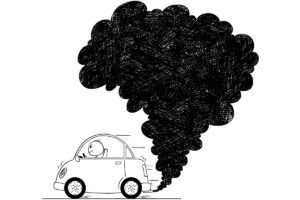
A blend of 85 percent ethanol and 15 percent gasoline comprises E85, a fuel that can be used in increasingly popular flex-fuel vehicles. It appears to be a bargain at the pump, selling on average for $0.70 less per gallon than gasoline, according to AAA. But, there is more to the story. By volume, ethanol contains less energy than conventional gasoline, which means drivers will need more of it to travel the same distance as with conventional gasoline. For example, the average driver logging 15,000 miles a year will need an extra 220 gallons of fuel if filling up with E85 rather than gasoline.
New car buyers, who are flocking to flex-fuel vehicles in an effort to reduce fuel costs, should check the EPA’s fuel economy ratings as it is unlikely car salesmen will offer that information. The average fuel economy of all 2008 flex-fuel vehicles when running on gasoline is 14 miles per gallon city and 19.5 highway. When running on E85, the vehicles average 10.2 city and 13.9 highway, an average of 28 percent fewer miles per gallon than gasoline. This means it will take more than one and a quarter gallons of E85 to travel the same distance that requires only one gallon of gasoline. Buying the additional E85 makes it more expensive to use than gasoline. In fact historic price data from the Department of Energy and E85prices.com reveals that for the past eight years, E85 has consistently been more expensive to use than gas.
Ignoring the facts – poor mileage ratings and extra fuel costs – government agencies and private companies, eager to enhance their “green” image, are lining up to buy flex-fuel vehicles. As the demand for ethanol-based fuel grows, industry and government are using subsidies to entice gas station owners to install new pumps for E85. Meanwhile, the price of ethanol continues to increase right along with that of gasoline. Ethanol production relies heavily on the use of fossil fuels in tractors, trucks, and farm equipment as well as fertilizer, meaning that record gas prices are reflected in ethanol prices.
So why is the nation producing and selling E85? The simple answer is many people stand to benefit. Farmers receive government subsidies to grow corn, private companies receive subsidies ($0.51 per gallon) to blend ethanol with gasoline and politicians can promote ethanol use to burnish their environmental credentials. The subsidies create the incentives for production, and the unwitting consumer drives the market.
Automakers have something to gain as well. Production of flex-fuel vehicles is inexpensive and earns credit toward meeting government mandated fuel economy standards. The latest standards require all passenger cars sold in the US to achieve 35.7 mpg by 2015 and all light trucks to perform at 28.6 mpg. The credit artificially inflates the fuel economy of all flex-fuel vehicles for the purpose of reporting fleet averages. For example, if a flex-fuel vehicle averaged 25 mpg on gasoline or diesel it would be given a 40 mpg value in calculating fleet averages. The credits not only help automakers dodge making costly changes to improve gas mileage, but also help them avoid hefty fines for missing the mandated targets
Despite the false promises, questionable environmental benefits, cost to taxpayers, and the bilking of consumers, it may get worse before it gets better. In December 2007, President Bush signed an energy bill requiring a nearly six-fold increase in the use of biofuels (primarily ethanol) by 2022. The mandates are unrealistic at best and will inevitably need to be waived, at least in part. In the interim, automakers will expand production of flex-fuel vehicles, gas stations will install new pumps, and consumers will line up to buy E85 with the false hope of reducing their fuel costs and saving the environment.



